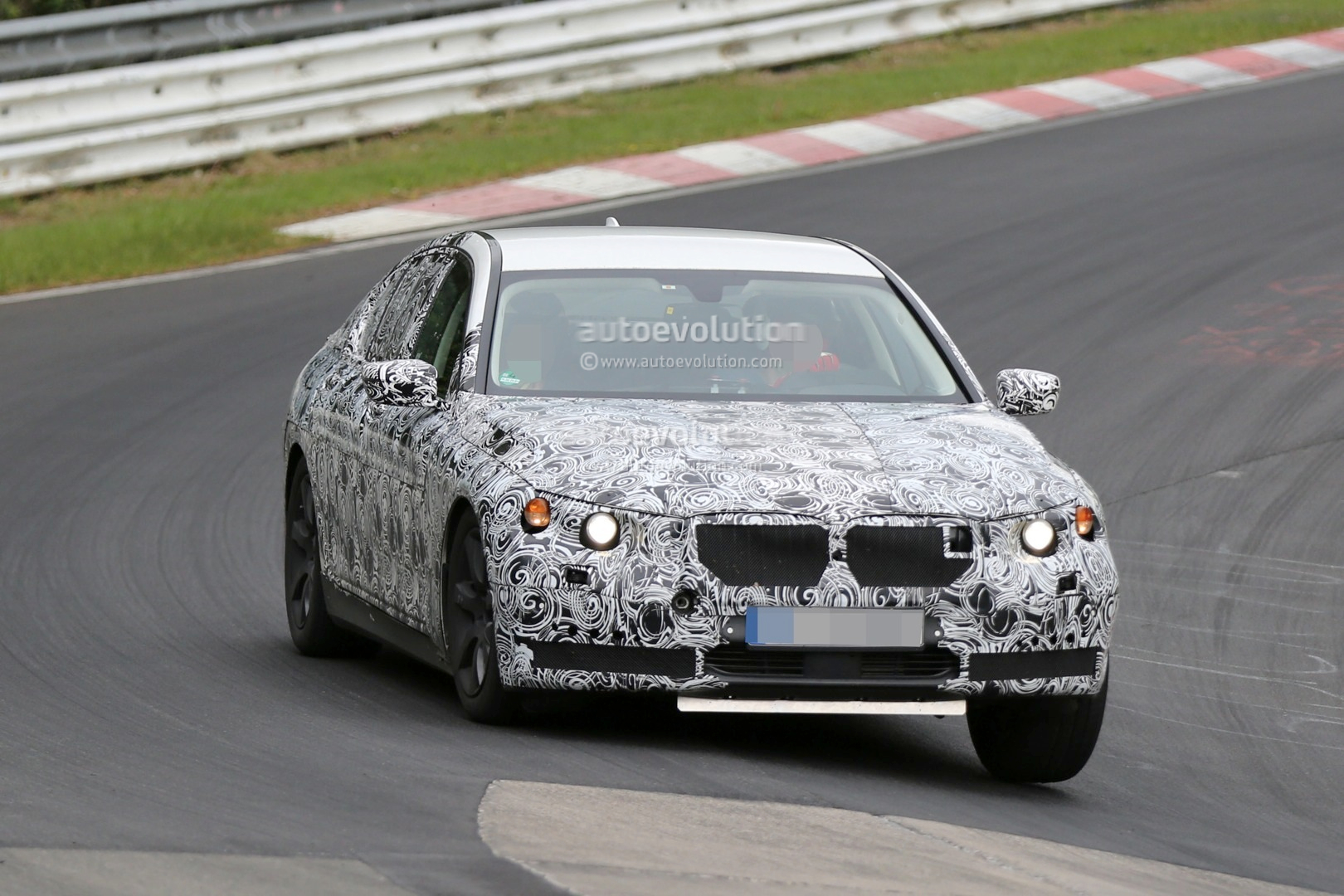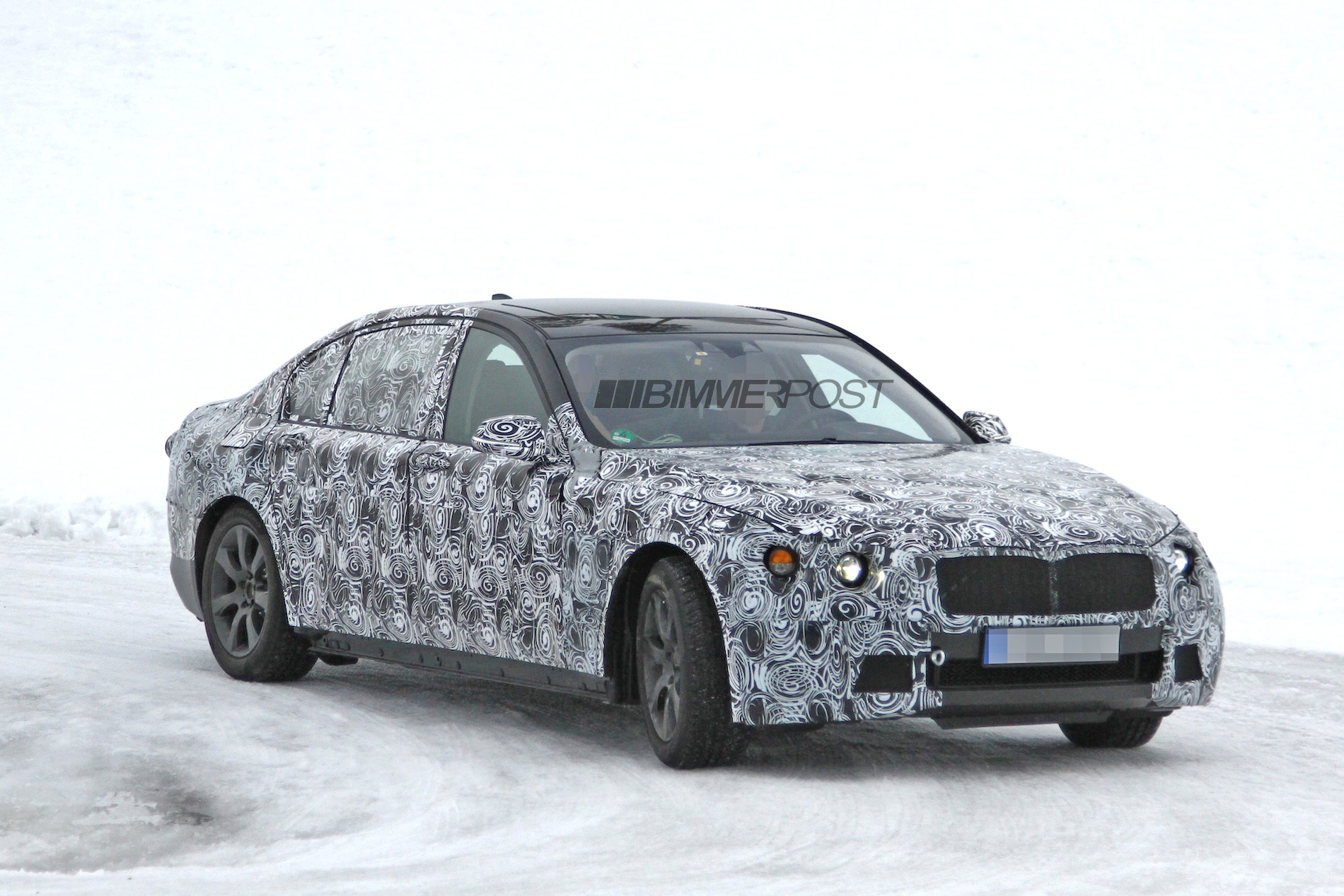BMW is preparing to roll out the new 7-series
in 2015 – with a slick new look, tech galore and two bodystyles ready
to challenge the mighty new Mercedes S-class, which has steamrollered
all competition before it.
Yes, Munich’s new flagship will again be badged 7-series. The
proposed 9-series coupe, shown at Villa d´Este in 2013 and designed by
Pininfarina together with BMW´s own Karim Habib, has gone exactly
nowhere, and the this-might-be-the-secret-9-series Beijing Show concept
(dubbed internally DCC050) was at best an overstyled teaser. There will
be no 9-series in the foreseeable future, and that’s a promise.

BMW 7-series: codenamed G11 and G12
Anyone who’d given up understanding BMW E and F codenames may be in
for a shock. The 2015 7-series uses yet another letter to keep anoraks
on their toes. The G11 stands for the standard-wheelbase 7-series while
the G12 denotes the LWB effort.
Although we don’t have any renderings of the new 7-series, we have
heard a surprising amount about the look of the new limo. And it’s the
extended wheelbase variant which makes the bigger splash. After all,
this is the only 7-series model to wear eye-catching chrome accents
along the shoulders, sills, grille, door handles and exhaust. Not
subtle, but very attractive. A new styling element worth closer
inspection is the full-width aperture that links the lower lateral nasal
air intakes.
It makes the front end look bolder and sportier. Inside the 2015 BMW
7-series, we find the usual blend of leather, wood, carbonfibre and
metal, plus the latest TFT and HUD gadgetry. The cabin is light years
classier than the 5- and 6-series’ cockpits.
The oily bits inside the new 2015 BMW 7-series
The new 2015 BMW 7-series, ne G11/G12, is the first BMW based on the ‘35up’architecture
which is fully scalable in dimensions, materials and content. Weight
problems are addressed and solved by clever combinations of
defined-to-measure sub-modules featuring lightweight material mixes.
In the case of the new 7-series, this means that the entry-level
versions will for instance use lighter chassis elements, smaller brakes
and a less complex cooling circuit than the high-end cars. This saves in
excess of 100 kilos over the outgoing model, sources say.
A 2.0-litre 7-series is coming
BMW is investigating a bespoke Efficient Dynamics version to create a
725i powered by a 272bhp 2.0-litre four-cylinder which is, if so far
only on paper, rated at 40.8mpg.
The new top-of-the-line model is the first BMW to feature the latest
3.0-litre inline six-cylinder engines codenamed B58 (petrol) and B57
(Diesel). While power and torque are up by about 10%, the fuel economy
improves by a similar amount.
The V8 undergoes a mid-cycle efficiency boost but does not yet follow
the cost-saving 500cc-per-single-cylinder formula. What about the V12,
you ask? It would not be worth to update it exclusively for the 760i,
which finds on average only 4000 takers per year.
But since Rolls-Royce intends to keep waving the 12-cylinder flag for
several years to come, the twin-turbo powerplant gets a fresh lease of
life. On the hybrid front, G11/G12 switches from parallel to plug-in
application. According to the Munich grapevine, the 750h will mate a
345bhp twin-turbo six to a 109bhp e-motor. In an evolutionary step, BMW
is expected to upgrade the system from plug-in to induction charging
which is a lot more convenient but about 15% less efficient.

The 2016 BMW 7-Series will ride on an all-new platform called "35up"
using a combination of aluminum, magnesium, carbon fiber-reinforced
plastic and high-strength steel which will make the flagship BMW a lot lighter
than today’s 7-Series. It is believed up to 200 kg (440 lbs) will be
eliminated which would make the lightest 740i version weigh
approximately 1,650 kg (3,637 lbs).
The vehicle will benefit from a double wishbone front suspension and
multi-link rear setup made mostly from aluminum and benefiting from a
new generation of air springs, stereo cameras and road-scanning tech -
all for the purpose of providing a more luxurious and comfortable ride.
Besides the usual standard and long wheelbase
variants, the next-gen 7-Series is expected to be offered in an
extra-long wheelbase variant, just like Mercedes-Benz will be doing with
the S-Class Maybach.
There will reportedly be a range-topping sport variant called
M750i/M7 featuring an uprated variant of the M5's V8 4.4-liter
twin-turbo tweaked to develop more than 600 bhp (447 kW). In addition, a
plug-in hybrid 7-Series
is also in the works but details are not available at this moment. The
regular engine lineup will include a wide variety of four- to
twelve-cylinder motors mated to a nine-speed automatic gearbox and rear-
or all-wheel drive.
Thanks to a significant diet, BMW will be able to install a small
4-cylinder, 2.0-liter turbodiesel engine while for more power clients
will be able to opt for an inline-six 3.0-liter diesel offered in three
states of tune and with twin and triple turbo configurations. On the
gasoline side, expect an upgraded version of today's inline-six 3.0 and
newly developed 4.0-liter V8 and 6.0-liter V12 engines which will also
power future Rolls-Royce models.
Following its September 2015 introduction in Frankfurt, the next-gen
BMW 7-Series will likely go on sale at the beginning of 2016 with an
exterior styling influenced by the Vision Future Luxury concept.

2 comments:
Hi, very usefully information, keep it continue. 2016 BMW Series latest model year for 2016.
2016 BMW 2 Series
2016 BMW 3 Series
2016 BMW 4 Series
2016 BMW 5 Series
2016 BMW 6 Series
2016 BMW 7 Series
Source: www.gtopcars.com
Hi, BMW latest model year for 2015
2015 BMW 2015 BMW 7-Series
Post a Comment